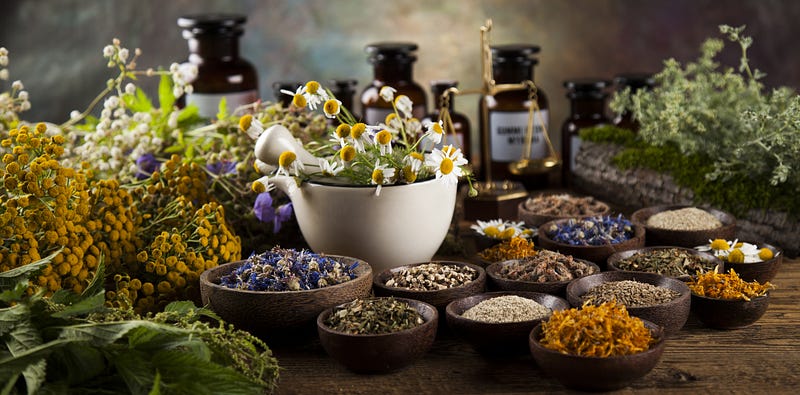What Prescriptions Are In My Garden?
Heather Welch, Environmental Science, 2020

When I was very young and complained to my mother about a sore throat, she would give me tiny white pebbles that looked vaguely like Dippin’ Dots and tasted like weird sugar. Their primary ingredient was echinacea, a purple flower that has long been used as an immune stimulant. Echinacea, and hundreds of other plants, function as a treatment for many ailments. These plants can be processed and applied in many different forms: whole herbs, essential oils, ointments, tinctures, tablets, and more. This system of herbal medicine, which is one facet of the broad spectrum of traditional medicine, may be mysterious to a young child, but it has been a significant part of culture and medicinal history since ancient civilizations populated the Earth.
Experts speculate that the use of herbal medicine began in prehistoric times when humans ate whatever plants they could find and ended up expressing physiological reactions based on whether the plants were toxic or beneficial. From that point on, the knowledge of herbal medicine expanded and blossomed into several systems of traditional medicine including Ayurveda, Kampo, Unani, and traditional Chinese medicine. Most of these systems emphasize the holistic evaluation of a person with respect to body and spirit (or energy), rather than treating a symptom.
Scientists estimate that plants are the basis for 25 percent of drugs prescribed around the world.
Although herbal medicine began as an ancient practice, it extends into modern times. Until the 20th century, when a doctor trained in modern medicine overthrew the last Qing emperor, traditional Chinese medicine remained the primary method of healthcare in China. Modern health practices are now prominent in China, but traditional medicine remains a large part of the Chinese healthcare system. The same can be said for other countries and cultures. Even in America, disillusioned consumers turn to traditional medicine, including herbs and acupuncture. Scientists and researchers use the opportunity in this new ‘golden age’ of traditional medicine to analyze the scientific basis of the remedies used, as well as to discover new uses for plants in modern medicine. In fact, scientists estimate that plants are the basis for 25 percent of drugs prescribed around the world.
Not all of these plants are readily available to the general population; however, a fair few of the herbs and plants used in traditional medicine may be found in the average person’s backyard or kitchen. The next time you are having stomach pains, you could try drinking some boiled yam water as an alternative to Pepto-Bismol™.
Molecules (2016). DOI: 10.3390/molecules21050559
The American Journal of Cardiology (2008). DOI: doi.org/10.1016/j.amjcard.2008.02.007
Fitoterapia (2010). DOI: 10.1016/j.fitote.2010.02.001